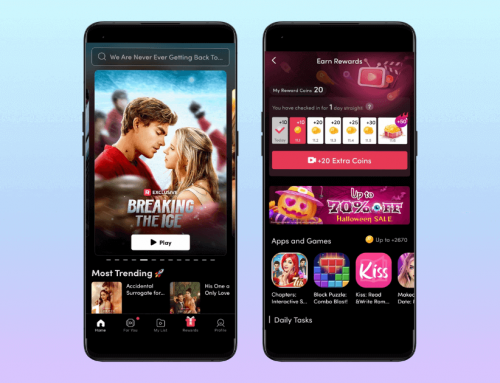How to write for a vertical screen…
As audiences move from big screens to mobile, vertical storytelling has become one of the most exciting frontiers in screenwriting. Writing for verticals and microdramas isn’t just about cutting your script shorter. It’s about rethinking story beats, character arcs, and audience engagement for a format that lives in the palm of your hand.
At Sea Star Productions, we specialise in creating vertical dramas and branded vertical content. Here’s what every writer needs to know to craft scripts that work in this format.
What Makes Vertical Writing Different?
Unlike TV or film, where viewers commit 30 to 90 minutes at a time, vertical formats thrive on:
- Immediacy, you need to hook your audience in seconds.
- Brevity, scenes are tighter, with minimal exposition.
- Closeness, vertical framing emphasises faces, gestures, and details.
- Scroll culture, audiences can swipe away instantly, so retention depends on pacing.

5 Golden Rules of Writing for Microdramas
- Hook in the First 3 Seconds
Audiences scrolling on TikTok or Reels decide instantly whether to keep watching. Start with a question, a shocking moment, or a conflict that demands attention. - Write for the Frame
The vertical aspect ratio (9:16) favours close ups, duos, and intimate staging. Avoid crowded scenes. Write moments that use the frame creatively! Glances, hand gestures, or confined spaces. - Keep Dialogue Punchy
Long monologues don’t work. Dialogue should be sharp, rhythmic, and visually supported. Think: one liners, cliffhangers, and unfinished sentences that lead into the next beat. - Structure Like a Loop
Instead of traditional three act arcs, vertical content often thrives on loopable storytelling: end where you began, or use cyclical beats so the viewer is tempted to rewatch. - Think Episodic, Not Epic
A vertical drama might deliver 20 micro episodes of 2 minutes each. Write each segment as a self contained beat, while threading in an overarching story.
Writing for Platforms vs. Writing for Drama
- Social Platforms (TikTok, Reels, Shorts): Fast, snackable, highly trend driven. Scripts often tie into memes, sounds, or challenges.
- Vertical Dramas (dedicated apps): More space for character arcs and emotional beats, but still compressed into short episodes.
Knowing where your story will live helps shape dialogue, pacing, and episode length.
Common Mistakes to Avoid
- Overstuffing the Frame: Too many characters or action beats get lost in portrait mode.
- Relying on Wide Shots: Vertical screens make wide shots look empty. Instead, write for intimacy and detail.
- Excessive Backstory: Jump straight into the action; build character through behaviour, not exposition.
- Forgetting Platform Behaviour: TikTok viewers swipe differently than a microdrama app audience. Tailor your pacing.
Future of Vertical Writing
- Interactive scripts where viewers choose the outcome.
- Hybrid storytelling: a mix of short form verticals leading into long form arcs.
- Branded microdramas: product placement written organically into stories.
As platforms evolve, so too will the craft of writing for verticals. But one thing remains constant: great writing is about engaging emotion, character, and conflict, no matter the frame.
Why Sea Star Productions
At Sea Star Productions, we know how to translate traditional writing craft into vertical success. From script development to full production, we help brands and creators deliver stories that captivate mobile audiences.
Looking to write your next script for vertical formats? Contact Sea Star Productions to develop stories that cut through the scroll and connect with today’s audiences.





















Does writing vertical scripts require a particular format, or is it just standard scriptwriting format in a “snackable” content? i.e. 1-15 seconds for the hook…
Standard scriptwriting format but just snappier and shorter episodes!